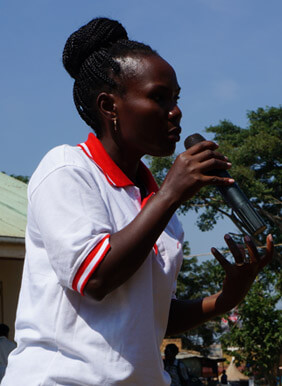An average of 13.3% of Ugandans carry the sickle cell trait and their lives can be saved hospitals were equipped with enough blood, the Sickle Cell Network Uganda says.
Sufferers — around five million worldwide — often have anaemia and get tired easily, run a higher risk of infections and stroke, and experience bouts of severe body pain.
Many need chronic blood transfusions.
This was the point emphasized by Evelyn Mwesigwa the executive director of sickle cell network Uganda in Nakirebe Katulaga village Mpigi District during the burial of Ashley Kanyike, a five-year-old who died of sickle cell anemia.
Ms. Mwesigwa called upon Ugandans to always donate blood in order to help save the lives sickle cell anemia victims.
According to Ms. Mwesigwa, many lives have been lost due to lack of blood in various hospitals in the country a problem which she said can be solved if Ugandans develop a habit of donating blood.
She, however, said there is going to be a two-month phase of a free screening drive at the Uganda National Health laboratory services in Butabika urging all Ugandans to take part in the drive.
Sickle cell disease is common in Uganda and it is caused by a genetic mutation that if inherited from only one parent protects against malaria, but if inherited from both parents can be lethal. Red blood cells can collapse into curved “sickle” shapes and clump together to jam capillaries, sometimes causing excruciating pain, shortness of breath and death.
The 14 districts with the highest sickle cell disease and trait of Kampala, Gulu, Lira, Jinja, Tororo, Luweero, Wakiso, Apac, Iganga, Mayuge, Buikwe, Oyam, Masaka and Masindi.
According to the Uganda Demographic and Health survey (UDHS), 2016, the sickle cell disease prevalence stands at 0.73 while the trait prevalence stands at 13.3% and it is estimated that 25,000 babies are born annually with the disease with 80 percent dying before their 5thbirthday.
However, there is a lot of ignorance with many people believing it is due to witchcraft or curse.











